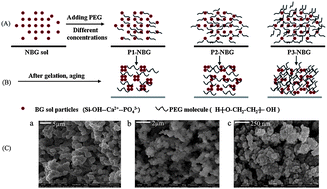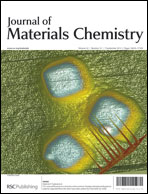There has been an increased interest in developing nanoscale biomaterials for bone tissue regeneration, due to the biomimetic nano-dimensions and properties compared to natural tissue (bone). Bioactive glass (BG) is regarded as an excellent biomaterial for use in bone regeneration, because of its bioactivity and osteoconductivity. Here, we develop bioactive glass nano-scale particles (NBGs) by sol–gel combining gelation-induced phase separation technology, and demonstrate the effect of bioactive glass dimensions on their physicochemical and biological properties. The micro/nanostructure, surface texture, and bioactive silicon species release were studied to indicate the physicochemical properties of NBGs. The bone-bonding ability was determined by investigating the apatite-forming bioactivity of NBGs. The effect of the micro/nanoscale interface on the attachment and proliferation of human marrow mesenchymal stem cells (hMSCs) was carried out to determine the biocompatibility of NBGs. All samples showed stable silicone release, and the nanoscale particles (40–800 nm) demonstrated a high apatite-forming ability. The biological results showed that all particle dimensions (40–2000 nm) supported hMSCs attachment and proliferation. The NBG with a nanoscale dimension of 40–180 nm significantly enhanced hMSCs proliferation. This study may provide a new route in the design of bioactive biomaterials’ nano-interfaces for efficient bone tissue regeneration.

You have access to this article
 Please wait while we load your content...
Something went wrong. Try again?
Please wait while we load your content...
Something went wrong. Try again?


 Please wait while we load your content...
Please wait while we load your content...